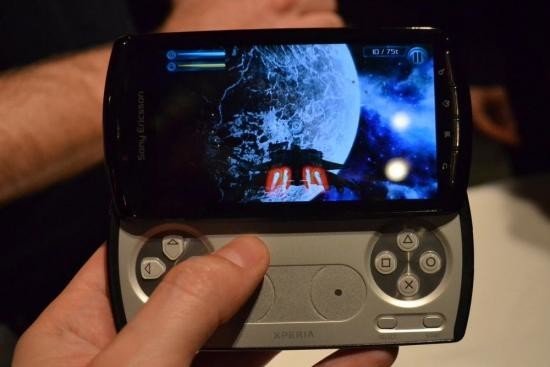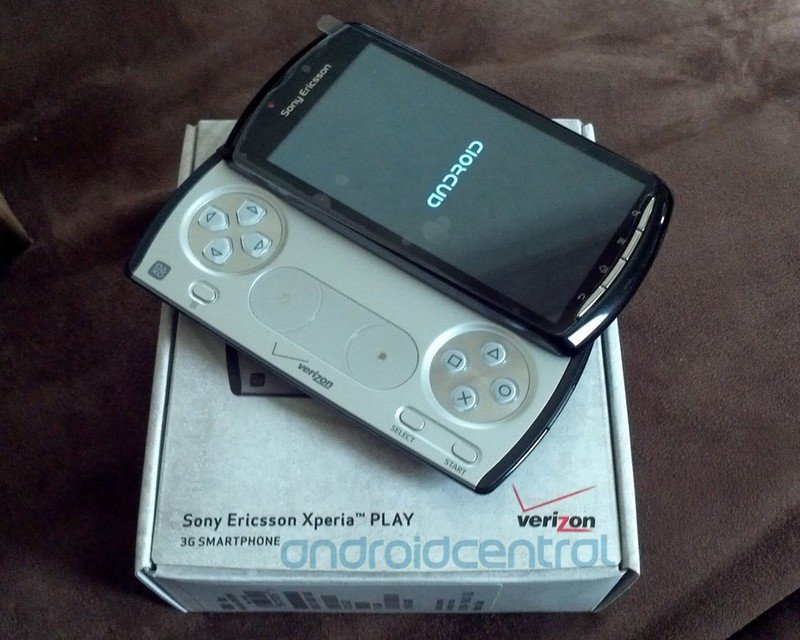If weird phones are making a comeback, I want a new Xperia Play

It's no secret that the smartphone industry is inching back into a progressive state. Manufacturers had long been content with the status quo while they worked behind the scenes to perfect the next generation of smartphones.
In previous episodes of this cycle, we saw all sorts of wonderful smartphones that looked and worked far differently than others on the market. They came in all shapes and sizes — squares, pucks, books, candy bars, sliders, flips, and even weird oval-shaped things (hello, Palm Pre). It almost sounds like a fast food menu. Perhaps that was the thought on these engineers' minds, who were clearly starved for innovation and used this technological boom as a chance to satiate themselves.
As a huge gamer, there was one phone around that time that spoke directly and very loudly into my heart: the Sony (then Ericsson, too) Xperia Play . Here was one of the first true gaming smartphones we'd ever gotten (and no, sorry, we're not counting whatever that N-Gage thing was supposed to be).

It was everything I wanted in a phone, made by the gaming brand I'd been growing up with since its very first product. It donned a sliding form factor, except instead of the usual keyboard hiding beneath the display, Sony had the gall to stick an honest-to-goodness gamepad there.
I mean, it was almost perfect. The buttons were nice and clicky, just as I like. There was a nice grip to it when using it in this mode. I could have done without the capacitive analog controls, but they worked well enough for the games of the era, and the few PlayStation Classic titles that got ported to the device were more than manageable as many of those titles didn't use analog sticks.
No one was ready

Unfortunately, everything was working against Sony at the time. Android was only just getting out of its infancy, and standardized game controller support wasn't common in Android games in 2011.
This meant the gamepad was usually only useful for the stuff you found in Sony's PlayStation Store. The phone also had limited availability on a global scale, which translated to poor sales, and meant limited support from even Sony itself. The Xperia Play was an outright failure.
Get the latest news from Android Central, your trusted companion in the world of Android
But as we've seen with the resurgence of the hinged smartphone, I think an Xperia Play — or something like it — would be killer in today's climate. Given ample time, money, and engineering talent, one of these manufacturers could take all they've learned about smartphone design over the years to create a super sleek gamepad slider phone that isn't much bulkier than an average handset.
Android is much more mature today and there is proper (but still imperfect) support for HID gamepads. Mobile games are getting extremely sophisticated and a lot more complicated to play.

I'd love to play Fortnite on the go, but because you have to cover half your screen with your fingers at all times it's kind of pointless without a controller. And I don't know about you, but I'm not looking to add more accessories to my daily bag. A built-in gamepad solves both these issues beautifully.
I know Razer and ASUS are doing good work on the gaming phone fronts, but even those devices are making concessions to conform to today's standards in lieu of a device that would be infinitely more useful to the cause. And in the case of the ASUS ROG Phone, they're still asking you to deal with those annoying accessories for the most pleasant experience.
More: Best Android Phone for Gamers in 2019
The market turbulence was deadly

Of course, I can't always get my way, but I know exactly why we haven't seen another Xperia Play: there's no demand for something like it. We know what sells by now: big screens, slim bodies, and devices that look like they were born rather than machined.
As the top manufacturers of the time learned what made them the most money, everything became homogenized. No one dared to stray off the beaten path for fear of getting lost in the woods forever, as we see some of the top brands of the time struggling just to stay alive today.

Homogenization wasn't all bad for the industry; it brought an era of efficiency that allowed devices at all points of the spectrum to get much better. You can buy a $300 device today that might do 80% of what something that costs hundreds more can do because these manufacturing systems have had years of refinement and perfection. That's awesome for everyone, everywhere.
More: Best Cheap Android Phones
But I'd be lying if I said I wasn't itching to be swooned by that adventurous device that urges me to tap into my wild side. The Galaxy Fold wasn't it, because although it's the most amazing smartphone tablet thing I've ever seen, I don't think it currently adds enough to my life that my current phone doesn't already (and that price tag certainly isn't helping matters).
There's still work to be done

Truth be told, I don't think the content is all there yet. We have a lot more compelling options today than we did back in Android's earlier days, but triple-A games are still the kings of the industry and Android is still just getting its feet wet with those.
That's going to change sooner than you think. Gaming companies know the future of gaming is mobile, hence the Nintendo Switch — which we talk about extensively over at iMore — and all the big studios ramping up efforts to bring out mobile renditions of their best properties.
And if you've been following the gaming industry you'd know its future is in the games-as-a-service model. No one cares which GameBox 480 console you're playing on, because they barely — if at all — make money on those.

It's the subscriptions for your continued enjoyment of the content they create. It's the microtransactions for that hot new skin all your friends are making you jealous with. It's the money you pay for all the other content services you buy into on the side, such as movies and music. That's how they make money.
In short, it's a guaranteed steady stream of income that will work better to reach bigger markets than asking consumers to keep spending thousands of dollars per year on video games that have taken a noticeable nosedive in quality of late. By eliminating the barriers to entry they, in turn, make more money because more people can afford to play the games they love.
Those barriers don't just exist on the economic plane, but also in the hardware itself. Ubiquity will become a big deal as we move into the next generation of video games, because the industry is clamoring for a unified culture where we can all play with our friends no matter which devices we have.
I predict there will be a big push for convergence, and anyone who knows me knows I love convergence and consolidation, and I hate redundancy even more. Combine all the things and make all the people happy. That's the way forward.
People didn't realize it at the time, but this is the gaming nirvana they've always wanted.
Work is already underway on that front, with Microsoft, Google, Sony, NVIDIA, Valve, and more working on game streaming technology that allows you to play games on any device that has an internet connection. There are a lot of hurdles to tackle before we can get to that future.
Network technology has to be in a state where they can deliver low-latency game streaming without heavily impacting network load (ideally, you'd want to be on Wi-Fi if you're gaming, but that's not always possible). They have to educate consumers on the benefits of game streaming and how it can change the gaming industry forever. And to repeat this article's chief point, the hardware has to be easier to manage when you want to play this stuff on the go.
Google Project Stream: Everything you need to know
Although I'm in the midst of transforming into a more value-minded consumer, I think I'd splurge heavily on a slick experimental new gamepad slider, and I hope one of these device makers will carry the flag once that bright future comes into focus.

